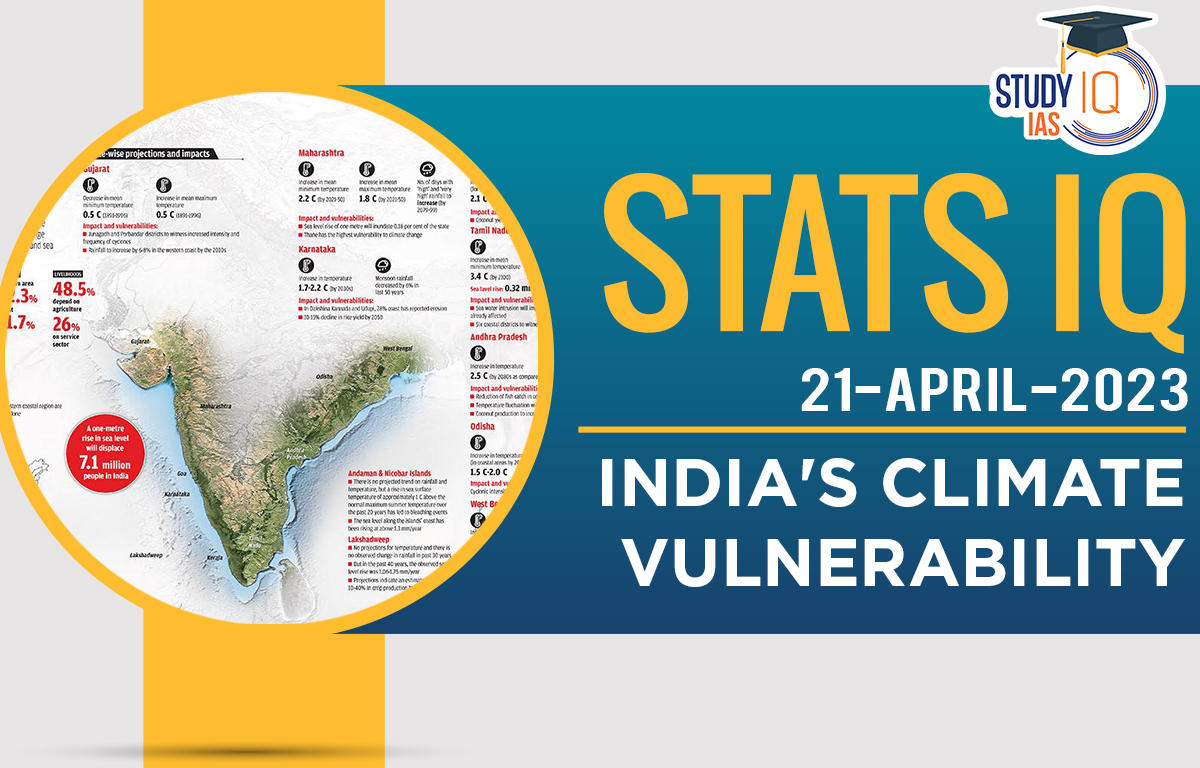India’s Climate Vulnerability
- India’s Vulnerability: India is the 7th most vulnerable country with respect to climate extremes.
- 3 out of 4 districts in India are extreme event hotspots, with 40% of the districts exhibiting a swapping trend.
- Climate Vulnerability Index (CVI): This study undertakes India’s first-of-its-kind district-level climate vulnerability assessment by the Department of Science and Technology.
- It presents a climate vulnerability index (CVI) of states and union territories by mapping exposure, sensitivity, and adaptive capacity.
- Key Findings of CVI:
- More than 80% of India’s population lives in districts highly vulnerable to extreme hydro-met disasters.
- Vulnerable Zones: The southern zone of India is the most vulnerable to extreme climate.
- 59 and 41% of the total districts in the eastern and western zones of India are highly vulnerable to extreme cyclone events.
- 5 out of 6 zones in India, i.e., South, North, North-East, West and Central have a low adaptive capacity to extreme hydro-met disasters.
- Vulnerable States: The states located in India’s northeast are more vulnerable to floods, while the states in the southern and central parts are more vulnerable to extreme droughts.
- Assam, Andhra Pradesh, Maharashtra, Karnataka and Bihar are highly vulnerable to extreme climate events such as floods, droughts and cyclones.
- Causes of Disasters: Unsustainable landscapes, lack of infrastructure planning and human-induced microclimate change are the key drivers of this high vulnerability.
- National Climate Vulnerability Assessment Report (2021): It is released by Ministry of Science & Technology. It identifies the most vulnerable states and districts in India with respect to current climate risk and key drivers of vulnerability.
- Key Findings of National Climate Vulnerability Assessment Report:
- Highly Vulnerable States: It identified Jharkhand, Mizoram, Orissa, Chhattisgarh, Assam, Bihar, Arunachal Pradesh, and West Bengal as states highly vulnerable to climate change.
- Lower-middle Vulnerable States: Himachal Pradesh, Telangana, Sikkim and Punjab.
- Low Vulnerable States: Uttarakhand, Haryana, Tamil Nadu, Kerala, Nagaland, Goa and Maharashtra.
- Highly Vulnerable Districts: Among all states, Assam, Bihar, and Jharkhand have over 60% districts in the category of highly vulnerable districts.
- Vulnerability Scores: Vulnerability scores in all the districts of India lies in a very small range. It shows that all districts & states are somewhat vulnerable with respect to current climate risk in India.
- Control Measures: India urgently needs national and sub-national strategies to climate-proof its population and economic growth. Some control methods could be:
- Develop a high-resolution Climate Risk Atlas (CRA) to map critical vulnerabilities at the district level.
- Undertake climate-sensitivity-led landscape restoration focused on rehabilitating, restoring, and reintegrating natural ecosystems.
- Integrate climate risk profiling with infrastructure planning to increase adaptive capacity.
- Provide for climate risk-interlinked adaptation financing.
























 WhatsApp
WhatsApp